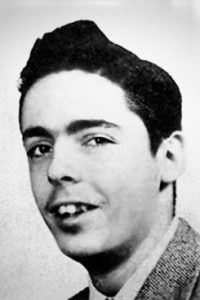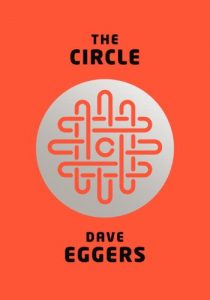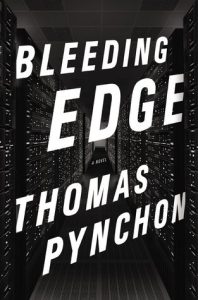The Metamorphosis
Franz Kafka
Review By Dan Geddes
For the would-be writer, the chief lesson of Kafka’s Metamorphosis is the effectiveness of fairy tale surrealism. Rather than submerge us in cries of despair, or the new Freudian psychology, Kafka expresses alienation through a memorable metaphor (if that’s what it is) from which he can get far greater mileage than if he treated his subject prosaically.
But in terms of his central metaphor, the lessons for writers are limited, because the recreation of such a metaphor would be an obvious tribute to Kafka, as much as one can disparage Kafka’s originality by citing literary precedents. Only Kafka could pull off this story with its peculiar flavor, and especially its humor.
From the edition I read, of the many critical viewpoints expressed, none seemed to touch on the absurd humor of the situation. From biographical information we know something about Kafka, and know that he probably often felt like an insect, and he took this metaphor to its artistic limit by treating it as such.
The critics also disagree on how to interpret the metamorphosis, some seeing only as an imagined neurosis of Georg Samsa (despite the 3rd person narration), others treating it as a dream, others treating it as a work of imagination (but not quite surrealism), a kind of twisted children’s story.
Especially in light of the wealth of possible interpretations of the action of the story as well, I would have to argue that Kafka was trying to create something rich and not quite penetrable. To give his story a consistent internal logic would limit the interpretative possibilites to: this is just a dream, this is a just a neurosis, etc. Through ambivalence, Kafka provides fertile ground for critical mining, and more importantly, a richer reading experience.
I enjoyed the story proper, and while reading it I took Samsa’s status as an insect as just as metaphor, a way to express alienation. The shame he felt before his parents, his hatred of his working drudgery, are all admirably conveyed. Some of the incisive (but not necessarily accurate) critical commentaries were so esoteric that they made me question the function of literature. If books are to be read on such a level that The Metamorphosis becomes nothing more than an system of symbols for Freudian psychology, why should we read it? Why not read Freud and get it direct? Such analysis does no justice to the ineffability of it all, and, I would argue, to the unwieldiness of creating literature, to the limits of artistic control.
I believe that writers have a difficult task in sorting through all they wish to convey, and that they have no problem with incorporating symbols from a vast variety of literatures, if the occasion calls for it. Meaning that Kafka, having conceived his central metaphor, and, equally importantly, knowing that the facts of the story would bear a great deal of verisimilitude to his own personal circumstances of the time, saw that the situation he knew he would include provided opportunities to include various materials that would suggest Christian, Jewish, Freudian, and other fields of symbols.
So Kafka had to create scenes to hold these symbols. This might be the case for the boarders, who apparently are collectively a phallic symbol. This is actually an example where we are not sure whether Kafka thought of the symbol first and then needed to find a place for it, or whether the economic circumstances of the family motivated the need for the boarders, (as well as Kafka’s need to bring more spectators to the scene, for purposes of domestic scandal) and he only thought of the symbol later.
I have to believe that most writers go through such a process, and that either a “story” or a “theme” or a dominant symbol can represent the first impetus for a story or novel. Once this is done, any of these can open up the vast floodgates of the author’s past experience to help him flesh out his story. As the work progresses (or is outlined; or both) this process continues; symbols and “realistic” scenes come to the writer’s minds, elements that “must” be incorporated for a variety of reasons. Writers of a certain stamp are probably overwhelmed at their own cleverness when discovering certain symbolic and thematic possibilities, and so invent the “realistic” scene of the story in which to put them. And vice versa.
My point here is that even the greatest work is going to have jagged edges to it: themes that are not fully developed, missed opportunities for more instances of a theme, instances of a theme that forced in for thematic considerations and that “stick out” because they have not been properly blended with the “realism” of the story, forced symbols, false symbols, fake symbols, mysterious and convoluted symbols, contradictory symbols, extra scenes, missing scenes. It would probably be impossible to determine when a theme has been “perfectly” realized; instead (like Freud) we must judge the normal by the abnormal; we know when themes are underdeveloped or tendentious or repetitious, but when is enough enough is one of the author’s many decisions while developing a theme.
I guess I am taking the critic’s task too seriously, but I believe it is presumptuous of the critic to presume an internally consistent set of symbolism, because of the daunting task of organizing. There will always be a tension between symbolic considerations and the demands of the story proper, of verisimilitude. As important as dreams are as a source of literature, readers do not want to simply read someone else’s dreams, with all their idiosyncratic meanings; the internal logic of another’s dream is very difficult to comprehend. The Metamorphosis is too confined and orderly to be strictly dream like; it has a structured story (of a sort): (the idea of the climax coming at the beginning is a separate issue).
All of which means that I like the ineffability of The Metamorphosis, and I do not wish to penetrate ot for an internal logic. As intellectually interesting as I find the idea that it is a dramatization of Freudian psychology, or is some twisted Christian parable, I like merely the evocations of these. In one sense it cannot be strict allegory because of character change. More than anything, I find it a humorous work: a man turns into a bug: Perfect!
This essay betrays the importance that I attach to criticism, despite my repeated critiques of it. After reading 50 pages of Kafka’s, and then 100 pages of critical materials about it, I began to even question the function of literature. Let’s face it: only humanists, of whatever variety (including unwitting students), are going to read The Metamorphosis. It will survive in this humanistic tradition, and so may be read for hundreds of years. It is in the canon, perhaps because it affords literary critics a vast opportunity for analysis; to show their own mastery of the rules of the game of literature.
As intriguing of a game as I find The Great Symbolic (Thematic) Treasure Hunt to be, lately I have become more concerned with the (emotional) effect of a story. Symbols can have great emotional power, especially when they reveal themselves in the midst of already meaningful action. Symbols are artifice, or sort of one weapon in the literature of effects. In novels like Kafka’s, they often steal the show, for after all, what is interesting about The Metamorphosis is the central idea and the play of symbols. Yes, we are somewhat concerned for the bug, but the story does not pack a great emotional wallop. I doubt that it was intended to. It is a work of cleverness, of intellect; and it is admirably written. But, considering the stars of the show, and the great ado made about it in the critical materials it made me question the function of literature. Symbols are often just part of a wider system of symbols, so that symbol reading becomes a game of name recognition, an aha feeling, akin to cryptograms.
Yet in the end, emotional power of a story is foremost: even for a novelist of ideas. Honing language and structure to augment this effect is a daunting task. Symbols and themes are mere tools; reinforcements; and not the stars of the show.
In the creative process it is probably the marriage of story line to theme that produces a eureka effect. Especially for an autobiographical novelist, finding a home for symbols on the time line of one’s own life story produces a glorious feeling.
I have not done much justice to The Metamorphosis. Especially reading it in translation, I cannot give an accurate account of the quality of Kafka’s language. I have not touched on the various turns of plot, because the criticism treated the artifices of the story much more than its emotional impact (if any), leading me to believe that here is a story where symbol dominates effect.








Be First to Comment